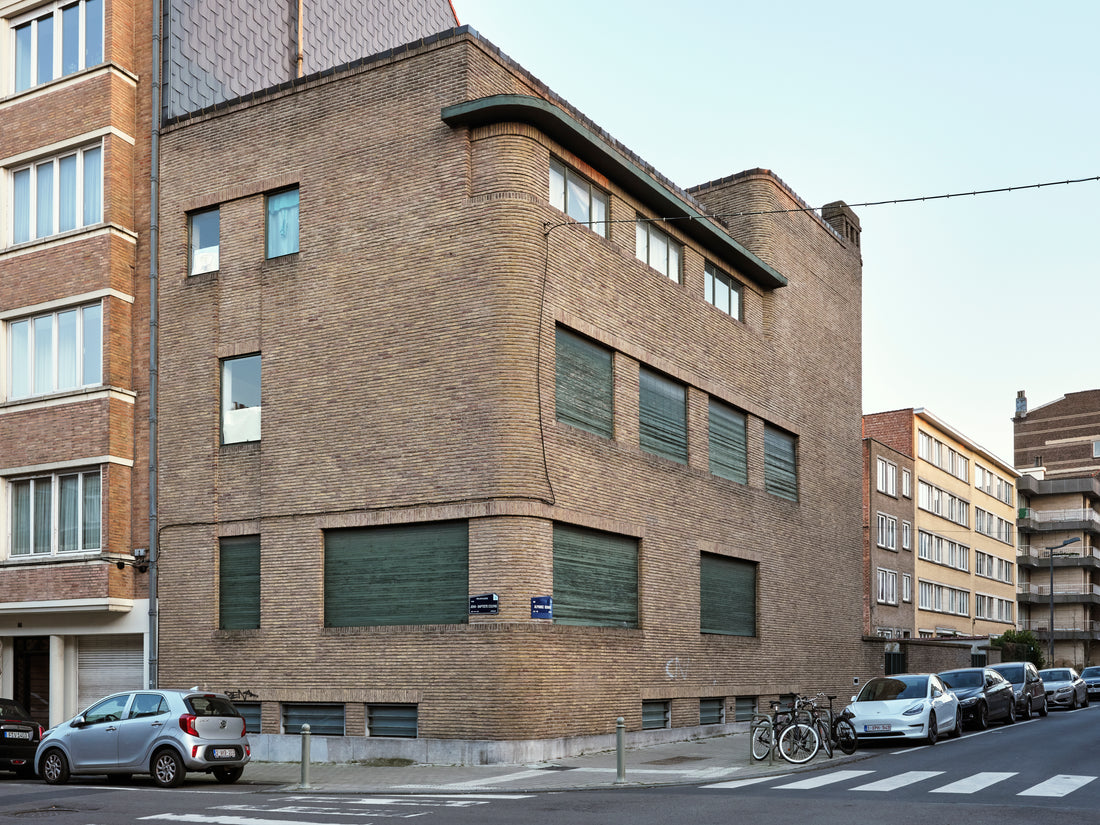
A walking tour of Modern architecture in Brussels
Share
Interested in exploring the city of Brussels through its Modern architecture? Author and architectural historian Jacinthe Gigou guides us on a walking tour of the Belgian capital, curating an afternoon itinerary of Modern architecture, art galleries and cafes to discover through her new Modern Brussels Map.

Wolfers House, rue Alphonse Renard 60, Ixelles (1930-31). Photograph © Philippe_Bracquenier
The tour begins with a building by one of the most emblematic architects of Belgian Modernism: Henry Van de Velde (1863-1957), who founded the famous Institut Supérieur des Arts Décoratifs La Cambre in 1927. The Wolfers house is set on a corner plot that allows it to be developed in three dimensions. The discreet entrance is at the rear, accessed via a garden. The sober brick façade has beautifully rounded corners, giving it plenty of character.
Robert Puttemans's private house, rue Camille Lemonnier 112, Ixelles (1929)
Robert Puttemans built his private home with his architecture studio on the ground floor of the building. The sober, elegant brick façade features slender metal frames. On the first floor, you can make out the former workshop, lit by a tall, wide window. The flat roof shelters a vast garden.

Glass House, Paul-Amaury Michel, rue Jules Lejeune 69, Uccle (1935-36). Photograph © Philippe_Bracquenier
Another architect private house. This was the first house built by Paul-Amaury Michel, who was only 23 when he built it. It reflects the influences of Le Corbusier: pilotis, a flat roof and large windows. The rear façade, which can sometimes be seen during Heritage Days, is made of glass bricks, as in Pierre Chareau's Glass House in Paris, which Michel visited and which greatly inspired him.
Clarté, Paul-Amaury Michel, avenue Molière 292, Uccle (1938)
Paul-Amaury Michel's tribute to Le Corbusier is the Clarté building (1938), named after the building Le Corbusier built in Geneva in 1932. Light is the main theme in this building, entering through continuous windows all along the façade. The whiteness and purity of its lines make it a fine example of inter-war Modernism.

Le Rivoli, chaussée de Waterloo 690, Uccle
Built in the late 1970s by Victor Demeester, Le Rivoli was designed as a luxury apartment building and shopping mall. Its concrete arcades are a striking feature of the district. Today it is home to a number of contemporary art galleries, which lovers of contemporary art can discover.
Petrucci-Wolfers Hotel, rue de Praetere 18-20, Ixelles (1926)
Built in 1926 by Jean-Jules Eggericx, this handsome inter-war town house is reminiscent of the brick architecture of the Amsterdam School, one of the trends of Belgian Modernism. Originally, it housed two flats. In the centre, the column of frames indicates the presence of the central staircase serving the house's two flats. It is sometimes possible to visit the house on the occasion of a concert or an
exhibition. When you do, you'll discover its central octagonal hall covered in jade-green paving: a jewel!

Vincennes Residence, avenue Louise 479, 1000 Brussels (1961-62)
Let's finish our tour with this beautiful building dating from the early 1960s. Designed by architect Lucien-Jacques Baucher, in collaboration with Jean-Pierre Blondel and Odette Filippone, it included flats, offices and shops. At 40 metres wide and 13 storeys high, it features a beautifully finished entrance hall. Push open the door to take a look: all the original features are still there: staircase, artwork by
Walter Leblanc, luminous pebbles, furniture and a wood installation by Jean Delogne.
Finally, take a stroll down Avenue Louise to the Étangs Ixelles, where you'll discover some fine examples of modern architecture, all the way to the emblematic Flagey building, where you can finish off with a well-earned drink at Café Belga!
Our Modern Brussels Map is now shipping. Available to order here.


